About the Book
X
Chapter Analysis
Chapter 27: The Altar of Burnt Offering
Background History and Timeline: Exodus continues the narrative of the Israelites' journey through the wilderness, following their deliverance from Egypt. The events likely occurred around the late 15th or early 14th century BCE.
Locations Mentioned: The chapter primarily focuses on the construction of the altar of burnt offering, which was located in the courtyard of the tabernacle.
Themes and Conflicts: Exodus 27 elaborates on the construction and placement of the altar of burnt offering, emphasizing themes of worship, sacrifice, and atonement. It underscores the central role of the altar in Israelite worship and the symbolic significance of offerings made to God.
Main Characters: The main characters in this chapter include Moses, Aaron, Bezalel (the skilled craftsman), and the Israelites.
Specific Passages:
Exodus 27:1-8: Instructions for constructing the altar of burnt offering, including its dimensions, materials, and accessories.
Exodus 27:9-19: Specifications for the construction of the courtyard of the tabernacle, including the placement of the entrance gate and the provision of oil for the lampstand.
Explanation: In Exodus 27, God provides Moses with instructions for the construction of the altar of burnt offering, which was to be located in the courtyard of the tabernacle. The altar served as the central place for offering sacrifices to God and seeking atonement for sins.
The altar was to be made of acacia wood overlaid with bronze, with horns on its four corners. It was to be hollow, constructed with planks, and equipped with utensils for handling the sacrifices. The altar's dimensions and specifications were meticulously outlined to ensure its functionality and symbolism in the worship of God.
Adjacent to the altar, the chapter describes the construction of the courtyard of the tabernacle, which was to be enclosed by curtains made of fine linen. The entrance to the courtyard was to be adorned with a screen of blue, purple, and scarlet yarn and finely twisted linen, creating a barrier between the sacred space and the outside world.
Additionally, instructions were given for the provision of oil for the lampstand, ensuring that it burned continually throughout the night in the tabernacle, symbolizing God's perpetual presence among His people.
Exodus 27 underscores the importance of worship, sacrifice, and atonement in the life of the Israelite community. The construction of the altar of burnt offering and the establishment of the tabernacle symbolized the Israelites' dedication to God and their desire for communion with Him.
The authorship of Exodus is traditionally attributed to Moses, who recorded the events and interactions with God during the Israelites' journey to liberation. While non-biblical sources may not directly verify the specific accounts, archaeological evidence corroborates aspects of ancient Israelite history and culture, providing context for the biblical narrative.
Exodus 27 highlights the central role of the altar of burnt offering in Israelite worship and the meticulous planning involved in the construction of the tabernacle and its furnishings.
